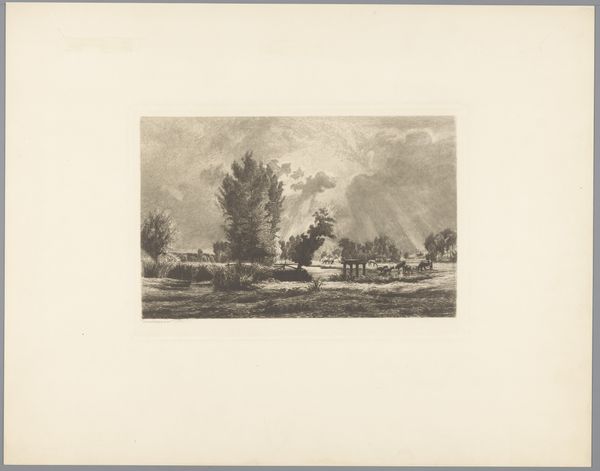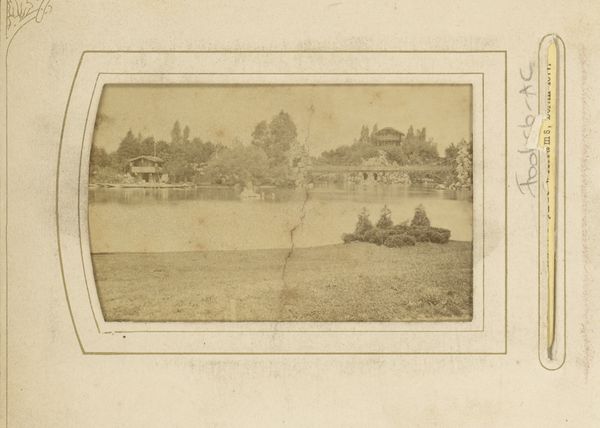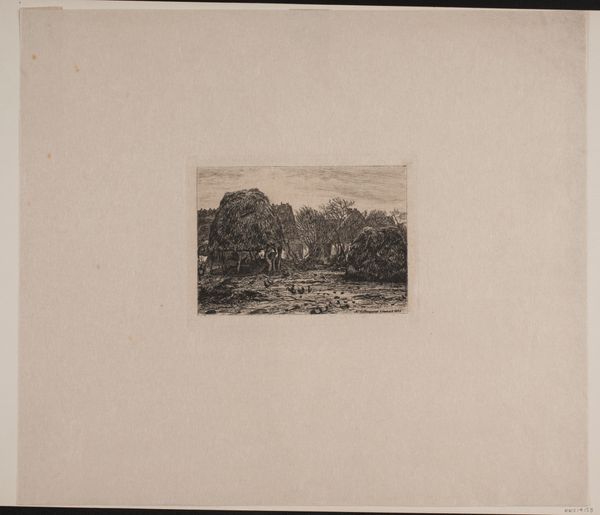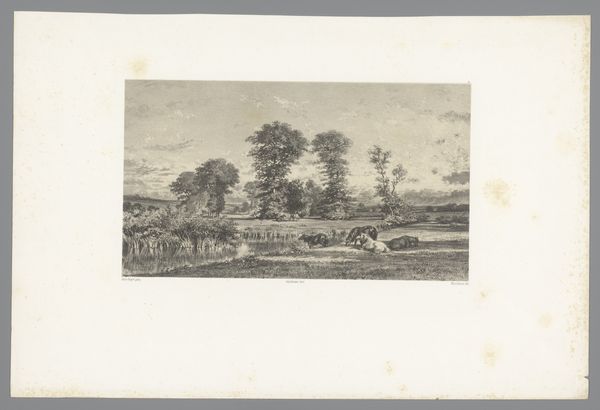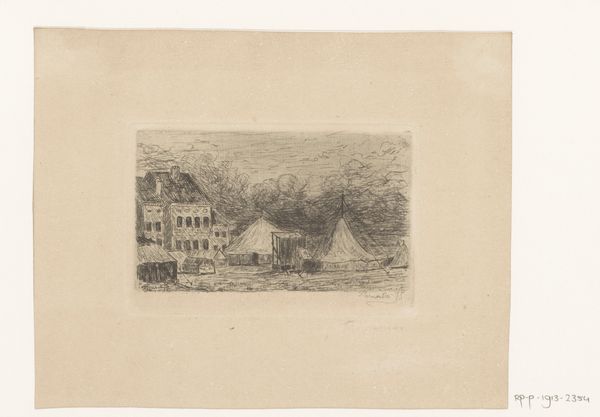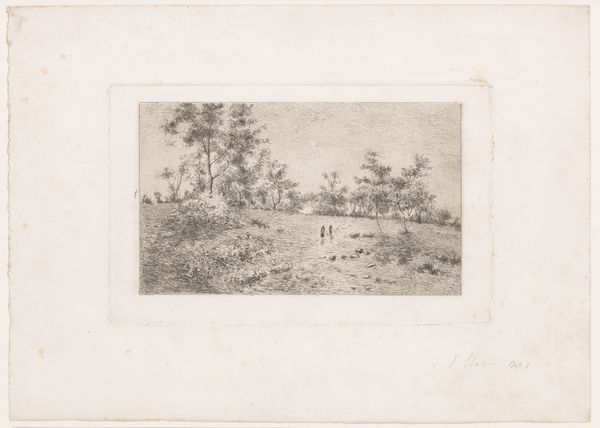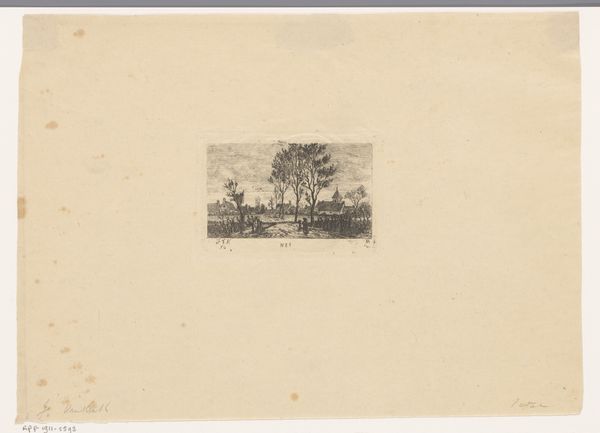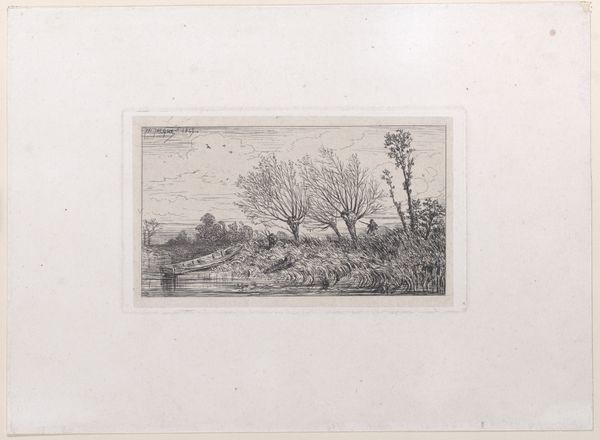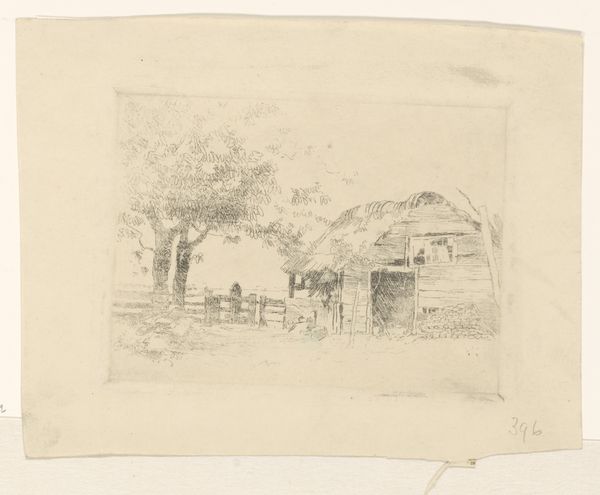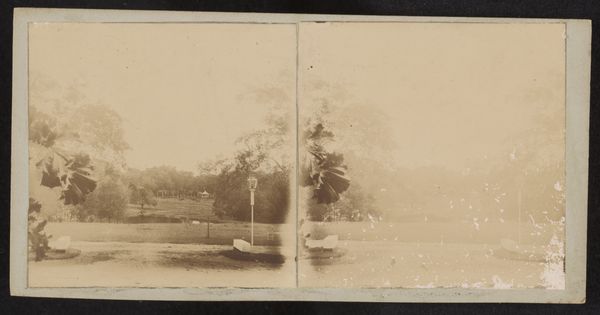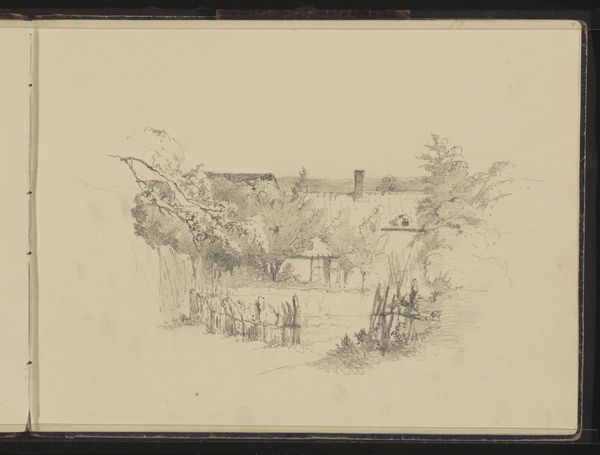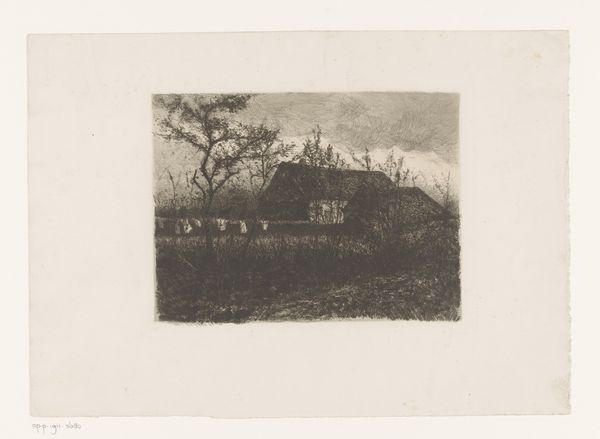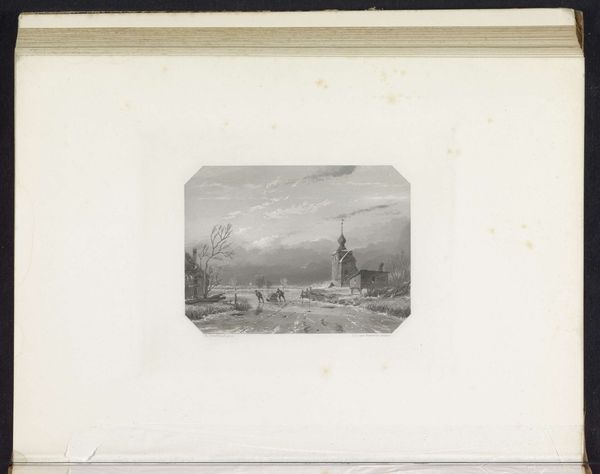
print, etching, photography
# print
#
etching
#
landscape
#
photography
#
oil painting
#
realism
Dimensions: height 130 mm, width 203 mm
Copyright: Rijks Museum: Open Domain
Curator: Paysage, dating from between 1863 and 1880 by Amédée Paul Greux. It’s rendered in etching. Editor: The entire scene gives off a sepia-toned, dreamlike atmosphere; very painterly despite it being a print medium. It appears meticulously crafted with layers of fine, incisive marks, evoking a landscape scene. Curator: Yes, the landscape motif immediately calls upon idealized pastoral concepts—the quietude, reflection, and the allure of nature as refuge. The windmill there adds a unique architectural feature that could point towards ideas about progress, industry, or even perhaps a touch of romanticism, connecting rural living to the spirit of ingenuity and hard work. Editor: I see that. Consider how the light etches out these textures of trees and suggests reflections in the water. The whole pictorial structure leans on delicate details to craft a balanced image. Did the artist experiment much with varying tonalities of light within this monochromatic structure? Curator: Potentially. Etchings tend to give this rather contrasted output depending on their age and printing condition; beyond simply the aesthetics or even capturing ‘truthfully’ this countryside ambiance, one must delve deeper into potential personal symbolism invested into it by the artist. Perhaps related to an individual quest of self-discovery amid society… Editor: Indeed, the way that the light reveals each strand or stroke really showcases technique – in terms of applying inks or layering acids… While each symbolic representation that may arise is, without question, critical for situating oneself within its broader social frame, that technical emphasis enhances both sensory stimulation—light catching surface textures or suggestive volumes of objects! Curator: Precisely—It serves to show us just how much psychological profundity might lie buried beneath serene exteriors we are apt, initially perhaps rashly when we see nature scenes/paintings alone by themselves, simply deemed aesthetic landscapes.. Editor: All considered now; through its visual language of composition and textural display there emerges almost meditative echo, connecting landscape scenes beyond what generally would presume its original context and personal memories related; all these small individual actions of making it into this rich moment! Curator: An exquisite observation, indeed. The work encourages us, in these quieter ways to question simple aesthetic reception regarding visual cultures around emotional experience of environments - as personal spaces both mentally or real landscapes we dwell.
Comments
No comments
Be the first to comment and join the conversation on the ultimate creative platform.
